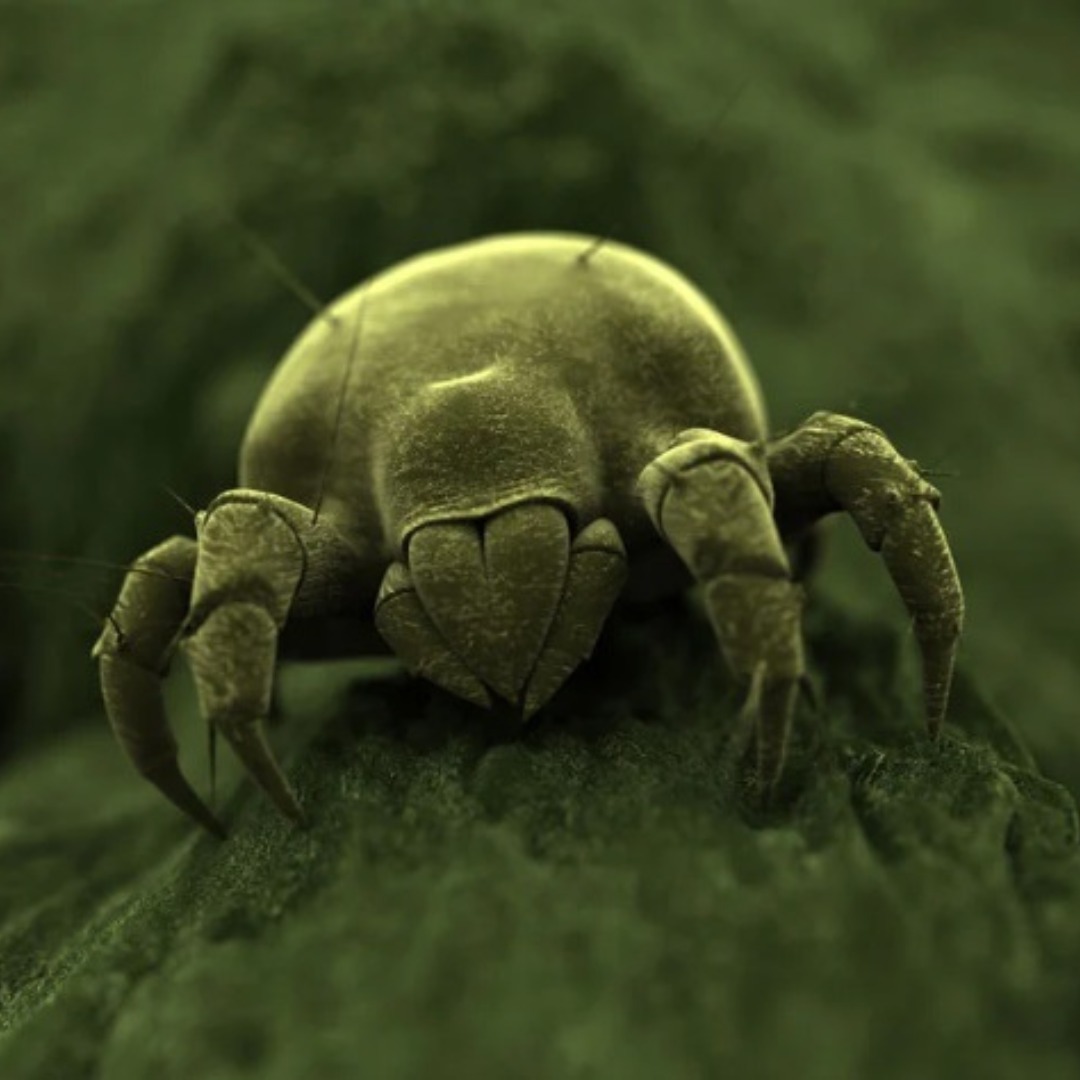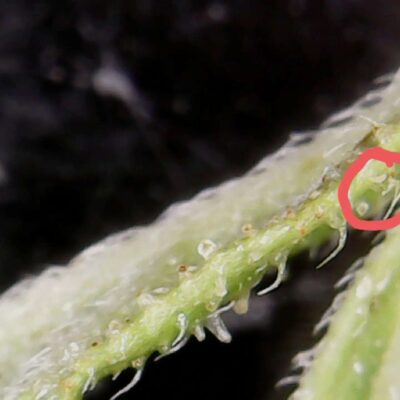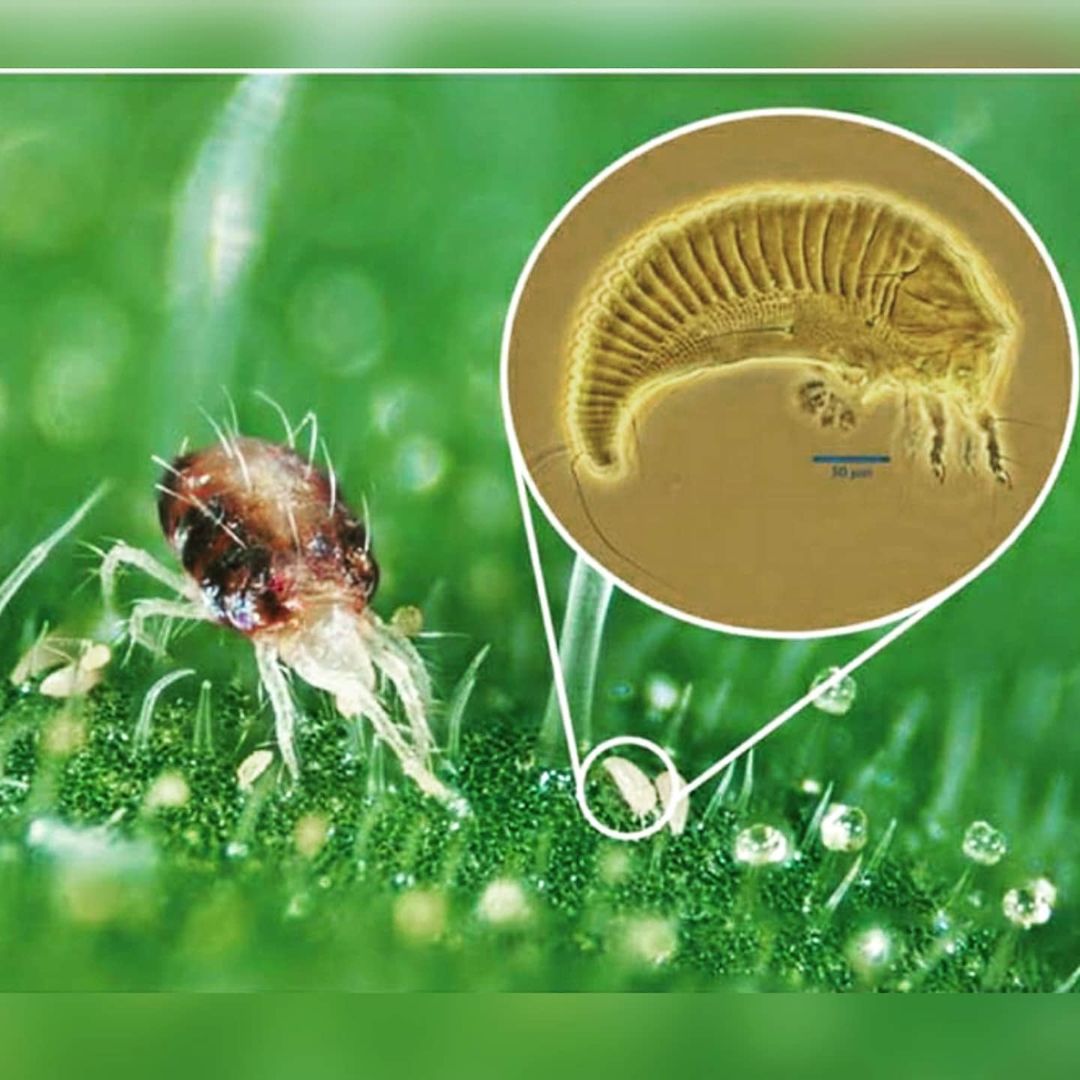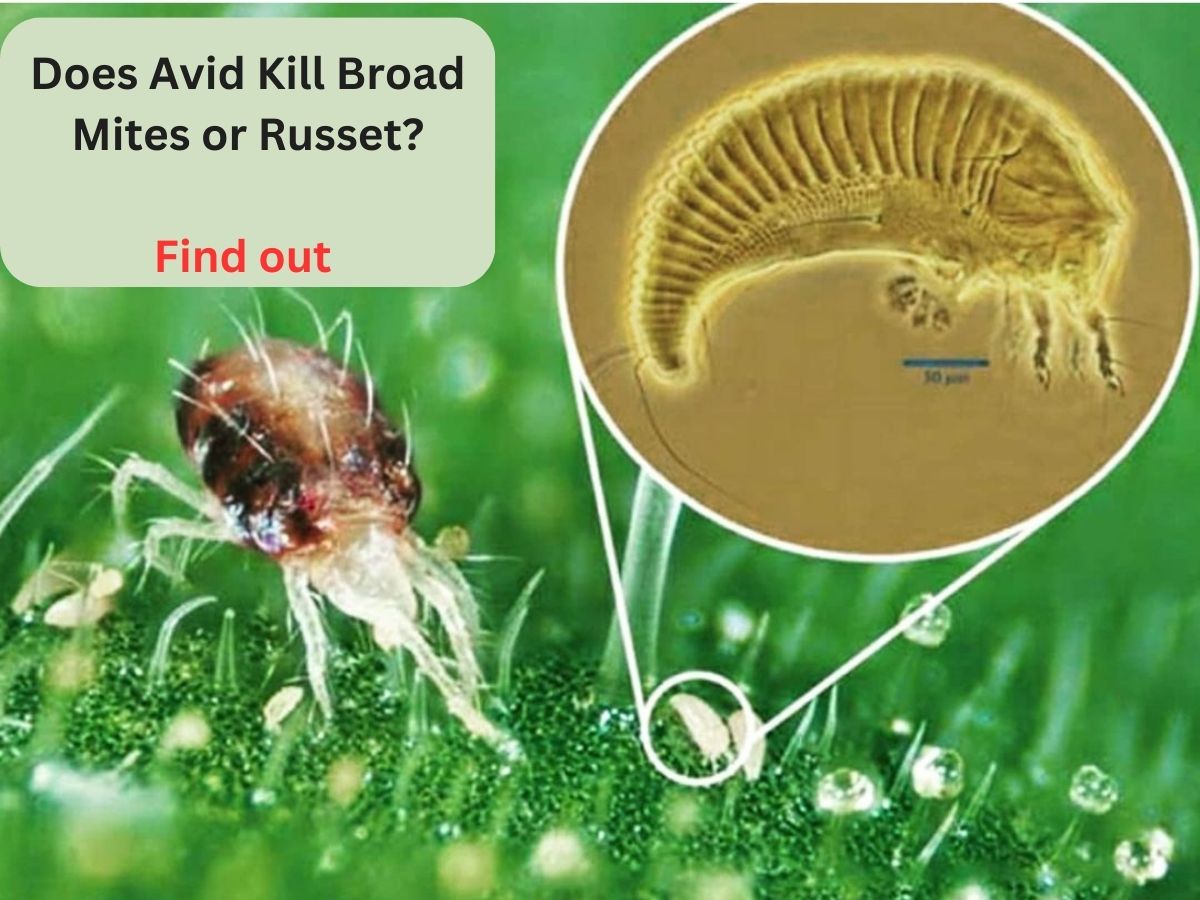Imagine pouring your heart and sweat into cultivating a lush garden or tending to your precious indoor plants, only to have your efforts thwarted by invisible intruders. which might leave you looking for answers such as does Avid kill on russet or broad mites?
Avid indeed works wonders against both broad mites and russet mites, offering a ray of hope for frustrated gardeners and cultivators. Avid’s efficacy against these tiny terrors isn’t just a rumor – it’s a proven reality. From curbing broad mite infestations to reigning in russet mites, Avid’s prowess has earned it a place in the spotlight.
Broad mites and russet mites, though minuscule in size, wield the power to wreak havoc on plants, leaving behind distorted leaves, stunted growth, and a trail of frustration for growers. As a seasoned horticulturist or a passionate green thumb, you understand the urgency of battling these relentless pests.
Below, we embark on a confident journey to unravel the truth: Does Avid truly possess the prowess to banish broad mites and russet mites from your garden? Get ready to bid farewell to mite-induced stress, armed with the knowledge that Avid is the real deal when it comes to safeguarding your greens.
Understanding Broad Mites and Russet Mites
Let’s begin by shining a spotlight on the tiny yet formidable adversaries that have gardeners and growers alike on edge: broad mites (Polyphagotarsonemus latus) and russet mites (Aculops cannabicola).
These minuscule pests might escape the naked eye, but their impact is far from subtle. Broad mites, with their wide-ranging appetite, settle on leaves and buds, puncturing plant cells and leaving behind a trail of deformities.
On the other side of the spectrum, russet mites – often found on the undersides of leaves – extract cell contents, causing leaves to curl, turn yellow, and even drop prematurely. It’s a battle of David versus Goliath, but these Goliaths bring forth stunted growth, distorted leaves, and reduced yields in their wake.
Intricately woven into the fabric of your plants’ well-being, these microscopic menaces disrupt essential cellular processes, stymying development and undermining the very essence of what you’ve worked so hard to cultivate.
Now that we’ve laid the groundwork for the havoc these pests can create, let’s embark on a journey to discover whether Avid holds the key to restoring your plants’ vitality and your peace of mind.
Signs of Broad Mite Infestation
In the world of horticulture, recognizing the signs of a broad mite (Polyphagotarsonemus latus) infestation is akin to detecting a stealthy infiltrator. While these microscopic troublemakers might not be visible to the naked eye, their impact on your plants is unmistakable. Keep a watchful eye out for these telltale indicators:
- Leaf Curling: One of the earliest signs, leaves affected by broad mites often curl inward along the edges, creating a cupped appearance.
- Silvering or Bronzing: Infested leaves take on a silver or bronze hue, a result of the cellular damage caused by broad mite feeding.
- Stunted Growth: Plants suffering from broad mite infestations tend to exhibit stunted growth and reduced overall vigor.
- Deformed New Growth: Young leaves that emerge under the influence of these pests may be severely distorted, displaying a crinkled or twisted look.
- Blistering: Broad mites trigger the formation of tiny blisters on leaf surfaces, disrupting their smooth texture.
- Darkening of Stems: Stems and petioles may darken or become purplish due to the disruption of normal growth.
- Reduced Flowering: Flowering and fruiting may be compromised, resulting in fewer blooms and a lower yield.
- Fine Webbing: As broad mites move about, they leave behind delicate silk-like webbing on the undersides of leaves.
Early detection is key to preventing these pests from wreaking havoc on your precious plants. If you suspect a broad mite infestation, take immediate action to mitigate the damage. And in the quest to determine whether Avid can come to the rescue, we delve further into its prowess against these elusive invaders.
Signs of Russet Mite Infestation
In the intricate tapestry of your garden, russet mites (Aculops cannabicola) may be minuscule, but their presence leaves an unmistakable mark. These elusive invaders might fly under the radar, but their effects are far from subtle. Here are the signs to watch out for:

- Leaf Discoloration: One of the earliest indicators, leaves affected by russet mites start turning yellow or bronze, often starting from the edges.
- Leaf Curling: Infested leaves might curl, creating a sheltered environment for the mites on the undersides.
- Fine Webbing: Russet mites leave behind delicate webbing on the undersides of leaves, which might be difficult to spot initially.
- Leaf Drop: Severe infestations can lead to premature leaf drop, significantly impacting plant health.
- Stunted Growth: Infested plants tend to exhibit stunted growth, as the mites hinder the normal expansion of plant tissues.
- Deformed Growth: New growth may be distorted or twisted due to russet mite feeding.
- Bronzing: Leaves might take on a bronze or russet coloration due to the cellular damage caused by russet mite feeding.
- Tiny Specks: As you inspect your plants closely, you might notice tiny specks – the russet mites themselves – moving on the leaf surfaces.
- Leaf Lesions: Infested leaves might develop tiny lesions, further contributing to their distorted appearance.
As these sneaky pests undermine your plants’ vitality, it’s essential to identify their presence early to prevent extensive damage. Our journey to uncover Avid’s potential against russet mites continues, shedding light on whether this miticide can truly be your garden’s knight in shining armor.
Introducing Avid: What Is It?
In the realm of pest control, Avid stands as a formidable contender, armed with its secret weapon – abamectin. Avid isn’t your run-of-the-mill solution; it’s a miticide that’s earned its stripes through its remarkable ability to combat a wide array of pests, including the elusive broad mites and russet mites. But what exactly is Avid?
At its core, Avid is a potent miticide formulated to tackle pests that threaten your plants’ well-being. The magic lies in its active ingredient, abamectin, a chemical compound that disrupts pests’ nervous systems, effectively incapacitating them.
It’s like a precision strike that zeroes in on the problem without causing undue harm to your plants or beneficial insects that call your garden home.
As we embark on this journey to understand whether Avid can truly bring broad mites and russet mites to their knees, we’re arming ourselves with knowledge about this powerful miticide.
From its inception to its mode of action, we’re laying the foundation for a confident exploration of Avid’s potential to be your garden’s shield against these relentless invaders.

 Avid’s Mechanism of Action
Avid’s Mechanism of Action
Ever wondered how Avid manages to wage war against the tiny but troublesome broad mites and russet mites? It’s all about the science behind its mechanism of action. Prepare to be fascinated as we unveil the intricate dance that takes place when Avid meets its adversaries.
At the heart of Avid’s power lies its active ingredient, abamectin. This chemical superhero belongs to a class of compounds known as avermectins, celebrated for their pest-fighting prowess. When Avid is applied to your plants, abamectin goes to work, penetrating the pests’ bodies through contact or ingestion.
Once inside, abamectin disrupts the normal functioning of the pests’ nervous systems, leading to paralysis and ultimately death. The mites’ days of wreaking havoc on your plants are numbered as Avid’s precision strike targets the pests while minimizing collateral damage to beneficial insects and your cherished greens.
The beauty of Avid’s mechanism lies in its specificity – it focuses on the pests that matter most, leaving the rest of your garden unscathed. So, while broad mites and russet mites may be elusive adversaries, Avid’s mechanism of action is like a spotlight that exposes them to the consequences of their actions.
As we continue our exploration, armed with the knowledge of how Avid operates, we’re well-equipped to assess whether it can truly live up to its reputation as a potent weapon against these relentless invaders.
Does Avid Kill Broad Mites?
The battle against broad mites (Polyphagotarsonemus latus) can be a frustrating one, but the cavalry might just arrive in the form of Avid. The question on everyone’s lips: Can Avid truly put an end to the havoc these microscopic pests wreak?
The resounding answer is yes. Avid has earned its stripes as a formidable opponent of broad mites. Numerous research studies have underscored Avid’s ability to deliver a knockout blow to broad mites. From ornamental plants to crops, Avid has consistently demonstrated its capacity to dramatically reduce broad mite populations.
Gardeners and cultivators have witnessed firsthand the rapid decline of these pests following Avid’s application, witnessing the resurgence of healthy growth where distortion and stunting once prevailed.
Whether you’re nurturing ornamental plants or tending to valuable crops, Avid’s track record of swiftly diminishing broad mite populations speaks for itself. So, when broad mites threaten to unravel your botanical haven, remember that Avid is more than up to the challenge. The question isn’t whether Avid can kill broad mites—it’s whether you’re ready to let it unleash its might on these microscopic foes.

Does Avid Kill Russet Mites?
Hold onto your gardening gloves, because the answer is a resounding yes – Avid isn’t one to back down from a challenge, even when it comes to russet mites (Aculops cannabicola). As with broad mites, Avid has shown its mettle in curbing the havoc wrought by these pesky invaders.
Studies and practical experience converge to showcase Avid’s effectiveness against russet mites. When applied correctly and diligently, Avid has proven its ability to rein in russet mite infestations. This means that you can rely on Avid as a powerful tool in your arsenal, helping you rescue your plants from the clutches of these tiny yet disruptive foes.
However, it’s worth emphasizing that the success of any pest control strategy hinges on precision and strategy. To ensure that Avid lives up to its potential against russet mites, meticulous application techniques and adherence to guidelines are of paramount importance. With the russet mite challenge on the radar, our exploration of Avid’s efficacy dives further into the depths of its impact on these elusive adversaries.
Tips for Successful Avid Application
Using Avid effectively requires attention to detail and a careful approach to ensure both optimal pest control and the safety of your plants, yourself, pets, and the environment. Here’s a step-by-step guide, complete with safety precautions, to help you achieve success:


Step 1: Preparation
- Read the Label: Before anything else, thoroughly read the Avid product label. This contains essential information about application rates, dilution ratios, safety precautions, and more.
- Choose the Right Time: Opt for a calm day with minimal wind to prevent drift. Early morning or late afternoon can be ideal, as mites are more active during these times.
Step 2: Mixing Avid Solution
- Safety Gear: Don appropriate safety gear, including gloves, goggles, long sleeves, and pants, to protect yourself from potential contact with the product.
- Measuring and Mixing: Measure the appropriate amount of Avid according to the label instructions. Add the required amount of water and mix thoroughly to create a uniform solution.
Step 3: Application
- Even Coverage: Use a handheld sprayer or a backpack sprayer to ensure thorough coverage of your plants. Pay special attention to the undersides of leaves, where mites often hide.
- Spot Testing: Before widespread application, perform a spot test on a small area of your plants to check for any adverse reactions.
- Avoid Overlapping: Be mindful of not overlapping the spray areas, as excessive application can lead to leaf damage.
Step 4: Safety Precautions
- Protect Beneficial Insects: Apply Avid early in the morning or late in the evening to minimize the impact on beneficial insects that are most active during the day.
- Keep People and Pets Away: While applying Avid, keep children, pets, and anyone not involved in the application away from the treated area. Restrict access until the spray has dried.
- Prevent Runoff: Avoid overapplication that might lead to excess runoff. This can prevent the chemical from reaching unintended areas.
- Keep a Safe Distance: Apply Avid outdoors to prevent inhalation of vapors. Avoid spraying on windy days to prevent drift onto unintended areas.
- Protect Yourself: While applying, wear protective clothing and avoid contact with the product. Wash hands and exposed skin thoroughly after application.
Step 5: Cleanup
- Clean Equipment: After use, clean your sprayer thoroughly to prevent any residual Avid from mixing with other substances in the future.
- Dispose of Containers Safely: Triple-rinse empty containers and dispose of them according to local regulations.
- Monitoring: Regularly inspect your plants for signs of mites and assess the efficacy of Avid’s application.
Step 6: Record Keeping
- Keep Records: Maintain a record of application dates, rates, and results. This helps you track the effectiveness and make necessary adjustments.
By following these step-by-step instructions and adhering to safety precautions, you’re ensuring both effective pest control and the well-being of your garden, your loved ones, and the environment. Remember, when it comes to pest control, safety, and precision go hand in hand.
Factors Influencing Avid’s Efficacy
In the world of pest control, success often hinges on the interplay of various factors. When it comes to maximizing Avid’s efficacy against broad mites and russet mites, understanding these elements can make all the difference in your battle plan. Here’s a closer look at the factors that can influence Avid’s performance:
- Environmental Conditions: Temperature and humidity play pivotal roles in Avid’s effectiveness. Mites may be more active under certain conditions, affecting when you should apply the miticide for optimal impact.
- Mite Stage: The life stage of the mites matters. Avid might be more effective against certain life stages, and timing your application accordingly can lead to better results.
- Thorough Coverage: Avid works its magic when it comes into direct contact with pests. Ensuring thorough coverage, especially on the undersides of leaves where mites often hide, is crucial.
- Resistance Management: While Avid is potent, pests can develop resistance over time. Rotating with other control methods or chemicals can help manage resistance and maintain Avid’s effectiveness.
- Adherence to Instructions: Following the manufacturer’s guidelines to the letter is non-negotiable. Proper dilution, application frequency, and safety precautions ensure you’re getting the most out of Avid.
- Integrated Pest Management (IPM): Avid works best as part of a comprehensive pest management strategy. Combining Avid with other control methods, such as cultural practices and biological controls, enhances its impact.
By keeping these factors in mind, you’re setting the stage for Avid’s triumph over broad mites and russet mites. Avid’s potency, when paired with a strategic approach, becomes your ultimate tool for safeguarding your garden’s health and vitality.
With these elements in play, the stage is set for a confident and successful showdown against the pests that dare threaten your plants’ well-being.

Alternatives to Avid for Mite Control?
While Avid stands as a robust solution in the battle against broad mites and russet mites, it’s not the only player in the field. In your quest to safeguard your plants, exploring alternative approaches can be a wise strategy. Here are a few alternatives to consider:
- Neem Oil: Neem oil, derived from the neem tree, is a popular choice for organic pest control. It disrupts mites’ growth and development, limiting their ability to reproduce.
- Insecticidal Soaps: These soaps break down mites’ protective coatings, leading to dehydration and eventual demise. They’re effective on contact but may require repeat applications.
- Predatory Mites: Nature has its warriors – predatory mites that feast on pest mites. Introducing these beneficial insects into your garden can help keep mite populations in check.
- Sulfur-Based Products: Sulfur-based sprays interfere with mites’ respiration and reproductive processes, making them a natural choice for control.
- Horticultural Oils: These oils smother mites and their eggs, offering a safe and effective alternative for both indoor and outdoor gardens.
- Integrated Pest Management (IPM): Combining various control methods, such as cultural practices, resistant plant varieties, and biological controls, can create a holistic approach to mite management.
- Pyrethrin-Based Insecticides: Derived from chrysanthemum flowers, pyrethrin-based products offer quick knockdown of mites. They break down quickly in the environment, making them a relatively environmentally friendly choice.
- Botanical Oils: Essential oils like rosemary, peppermint, and clove can have mite-repelling properties. Diluted oils can be sprayed on plants to deter mites and other pests.
- Biological Controls: Ladybugs, lacewings, and predatory mites are natural predators that feed on mites. Introducing these beneficial insects can help establish a natural balance in your garden.
- Systemic Insecticides: These chemicals are taken up by plants and distributed internally, providing protection from within. They can be effective against mites but should be used with caution, considering potential impacts on non-target insects.
- Sulfur Dust: Applied as fine dust, sulfur can disrupt mites’ life cycles and functions. It’s often used on plants that can tolerate sulfur.
- Acetic Acid Spray: A homemade solution made from vinegar, water, and a small amount of soap can be sprayed on plants to control mites. It’s best used on outdoor plants.
- Diatomaceous Earth: This natural powder damages mites’ outer shells, leading to dehydration. It’s a physical method of control that can be effective when applied to infested areas.
- High-Pressure Water Spray: Using a strong jet of water to dislodge mites from plants can be effective, especially in smaller infestations.
It is important to note that the choice of method depends on factors such as the severity of the infestation, the types of plants you’re dealing with, and your overall gardening goals.
Integrated pest management, which involves combining multiple strategies, often yields the best long-term results. As you consider these alternatives, tailor your approach to match the unique needs of your garden.
Also, each alternative comes with its own set of considerations, including application methods, timing, and compatibility with your gardening philosophy.
As you weigh your options, keep in mind the specific needs of your plants and the severity of the infestation. Armed with knowledge about alternatives, you can make an informed decision that aligns with your garden’s unique requirements.
Does Avid Kill Broad Mites or Russet Mites FAQs?
Is Avid Safe for Plants?
Absolutely, one of the reassuring aspects of Avid is its relative safety for plants when used as directed. Avid’s mode of action targets the nervous systems of pests like broad mites and russet mites, minimizing its impact on plant cells.
However, as with any chemical intervention, it’s essential to adhere to recommended application rates and guidelines. Overapplication or improper usage can lead to leaf burn or other unintended effects.
Always conduct a small patch test before widespread application to ensure your plants tolerate Avid well. In most cases, when used judiciously, Avid strikes a balance between pest control and plant health.
Can Avid Harm Beneficial Insects?
Avid is designed with a laser focus on pest insects, sparing beneficial insects from its effects. This is where Avid’s precision shines.
Its targeted approach zeroes in on the nervous systems of pests while minimizing harm to beneficial insects like ladybugs, lacewings, and predatory mites that contribute to a healthy ecosystem.
When employing Avid, you’re not only mitigating pest damage but also fostering a balanced garden environment where the good guys can thrive.
How Often Should I Apply Avid for Mite Control?
The frequency of Avid applications depends on a few key factors. The severity of the infestation is a primary consideration. In the case of heavy mite populations, you might need more frequent applications.
Typically, applying Avid every 7 to 14 days can be effective. However, it’s crucial to read and follow the manufacturer’s recommendations on the product label. Remember, consistency is key – sticking to a regular schedule helps break the mite life cycle and prevent reinfestations.
Can Avid Be Used in Organic Farming?
This question often sparks interest among environmentally-conscious growers. While Avid is a powerful tool, it’s important to note that it might not be compatible with organic farming practices. Abamectin, Avid’s active ingredient, is a synthetic compound that may not align with strict organic certification standards.
Organic farming emphasizes natural and non-synthetic solutions. If organic farming is your approach, consider exploring other alternatives, such as neem oil, insecticidal soaps, or beneficial insects. Always verify with your local organic certifying body or relevant regulations before incorporating any substance into your organic practices.
Conclusion
In the world of gardening and agriculture, the battle against broad mites and russet mites is a formidable one. Yet armed with the knowledge and insights we’ve explored, you’re better equipped to navigate this challenge with confidence. Avid, with its abamectin prowess, has demonstrated its mettle in the realm of pest control, proving its efficacy against these elusive invaders.
From its targeted mechanism of action to its role in integrated pest management, Avid stands as a valuable asset in your quest to maintain vibrant, healthy plants. The evidence is clear: Avid doesn’t just eliminate pests, it restores the balance that these mites threaten to disrupt. By following careful application guidelines, you’re not only enhancing Avid’s impact but also ensuring the safety of your garden’s ecosystem.
As you embark on your mite-busting journey, remember that Avid is just one piece of the puzzle. Incorporating diverse strategies, from biological controls to cultural practices, further fortifies your defenses against these persistent pests.
So, stand tall as the guardian of your green haven, armed with the confidence that comes from understanding the science behind Avid’s efficacy. As you bid farewell to the troubles these mites bring, your garden will flourish anew, reflecting the dedication and wisdom you’ve poured into its care.
